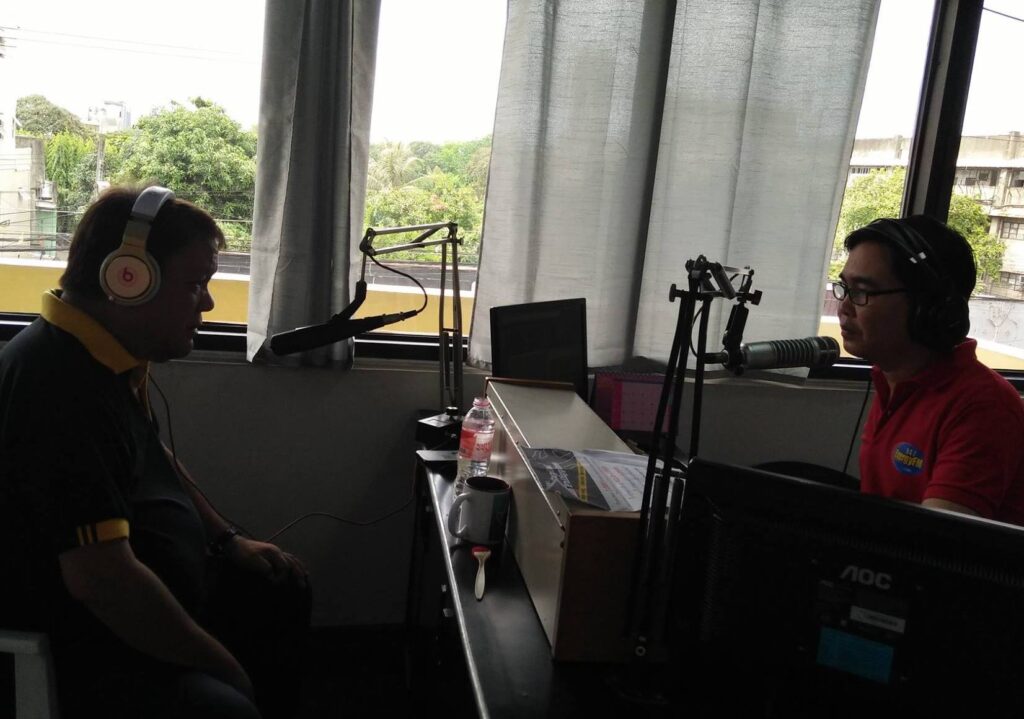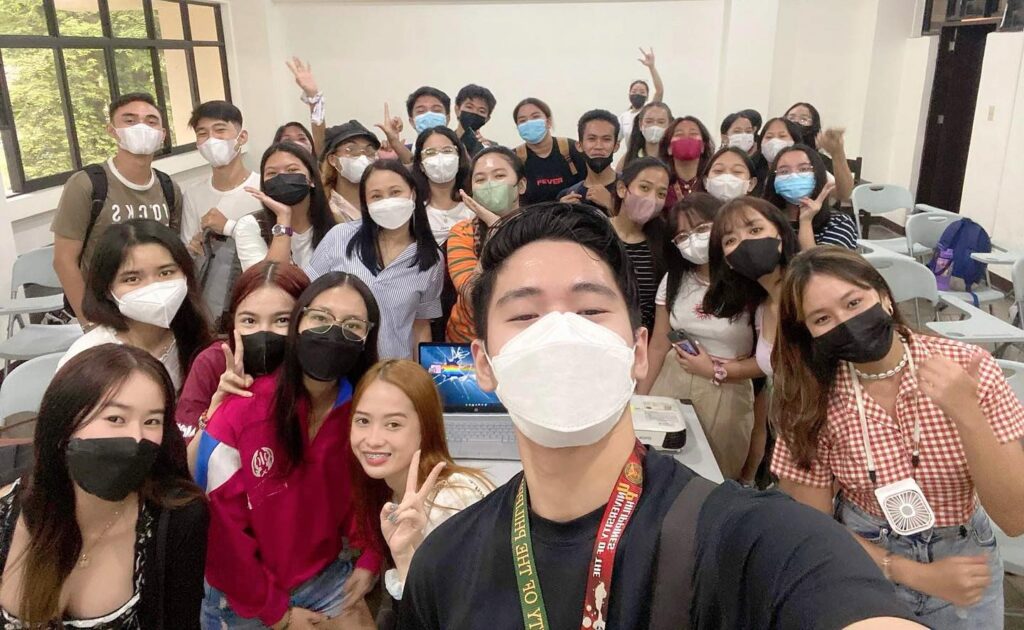CEBU CITY, Philippines— As we celebrate World Press Freedom Day today, May 3, 2023, it is crucial to reflect on the current state of the press and broadcasting industry in Cebu, especially with the rise of social media.
The trust and confidence readers and listeners have given the media have been strong backbones of the industry, but with the decline of some traditional mediums like radio and newspapers, it is time to hear from veteran editors, reporters, and academe about the industry’s future.
Zooming back to the start, news gathering then had a different play. News reporters basically needed to get from one point to another to gather information and to get in touch with the sources.
Veteran broadcaster, journalist, and former ABS-CBN TV news anchor, Leo Lastimosa recalled how he would get up early in the morning to call one of his sources.
“Manawag ko sa landline. Akong i record akong interview with Senator Sonny Osmeña. who is now deceased. Manawag ko niyag alas kwatro sa kadlawn, kay kung manawag ka niya after 5am, di naman nimo siya ma abtan sa bay, kay mag biyahe naman siya,” recalled Lastimosa.
From a five to ten-minute interview, Lastimosa said he can make two to three news stories.
He recalled how they would manually cut the reels used for recordings to edit new items and how each story only costs P10.

June Perez, veteran news radio reporter during one of his field coverages during his stint as a field reporter for the radio am band DYAB 1512.
From one radio news anchor to another, June Perez from DYAB 1512 said so much has changed from the before to today.
The year was 1985. It was just a few months before the EDSA People Power Revolution happened.
Perez, a neophyte reporter, recalled it was during those years when radio broadcasting had its glory days.
“Sugod ko ug panibya Desyembre 1985, pipila ka buwan sa wala pa ang EDSA People Power Revolution sa Pebrero 1986. Mao to ang panahon nga ang broadcast (ilabina ang radio) maoy gisaligan sa katawhan kung bahin na sa kasayuran ang hisgutan. Naa pod usab ang TV ug ang newspaper sa maong panahon. Pero ang radio ang gisaligan sa katawhan.”
“Matawag gani nako nga ang dekada 80, 90, hangtud sa 2000 maoy “Glory Days” sa pagpanibya.”
The press and broadcast journalism in Cebu through the years have always been on top of their game.
From small to big coverages, traditional media paved the way for mainstream media to come to light.
But, with the advent of technology, how is the state of traditional media now?
Lastimosa said the traditional media market in Cebu is diminishing according to some of his colleagues.
He has heard some mediamen say that traditional media is showing signs of declining, but they remain hopeful that integration of the new and old ways of news information will somehow make news reporting easier and accessible for everyone.
Perez said that the two [traditional and mainstream media] can co-exist.
“Para nako wala koy problema kung hisgutan ang pagtumaw na karon sa mga newscasts nga anaa sa social media. Mahulog ni siya nga dakong hagit sa mainstream media. Ang duha ka platform puede man usab nga mo co-exist.”
As the Kapisanan ng mga Brodkaster ng Pilipinas Cebu chapter president, Allan Montesclaros of Energy FM observed, traditional media is very much thriving even with the advent of social media.
Despite the widespread use of social media today, Montesclaros believes that being good on-air doesn’t necessarily translate to being successful in the digital world.
“In my opinion, no matter how good you are on air, it is not a guarantee nga you will also do good in broadcasting,” said Montesclaros.

Allan Montesclaros interviewing former Cebu City mayor Tomas Osmeña.
After the shutdown of ABS-CBN Lastimosa made a bold move by creating his own newscast on Facebook and Youtube.
“Pagsugod nako, gusto ko mo too nga mao ra gihapon, pero dili na diay. So, you have to adopt to the new medium. Ang akong style sa broadcasting kung ipareha gihapon nako sa ABS, I think manghuy-ab ang mga viewers ug tanaw. Mao nang mo innovate ko aduna koy video then I was told nga ang copyrights issues ana. So, I have to produce my own materials,” Lastimosa shared.
Montesclaros on the other hand said that the older generations of reporters are finding their way in bridging the gap between traditional media and mainstream media.
To bridge the gap between traditional broadcasting and social media broadcasting, Montesclaros noted that media practitioners from before are finding ways to adapt.
He also believes that social media is not affecting broadcast media as much as people may think.
Newsgathering and news dissemination are made faster by the mainstream media, compared to the past forms of journalism.
In Perez’s opinion, reporters are so reliant on technology that some values of news making like human interaction have been put to the side.
“Apan dungan usab sa pagkapapas sa karaang teknolohiya, nahanaw usab ang kaniadtoo nga gihimo sa inatubangay nga pagkuha ug balita. Tungod kay para nako, naa sa personal nimo nga pagsunod sa mga balita nga anha ka diha makahipos pa ug mas lawom ug mas lapad nga kasayuran sa balita.”
With the shift and the ever-changing dynamics of the press and broadcasting today, these veteran broadcasters have observed some practices that they thought should be addressed by today’s media practitioners.
Now that Lastimosa has to produce his own materials, he noticed something that really caught his attention.
“Na alarm ko nga most of my materials mag gikan na sa mga PIOs, sa ilahang mga Facebook pages, press statement. Ingon ko murag di naman ni mao kay kun mag gikan sa PIO that’s a press release, technically. So kun ako kuhaon ang ilahang materials gikan sa PIO wa ko kahibaw kung nag sulti ba sila sa tinood o walal ba,”
He suggested that news organizations should revisit the idea of deploying reporters back on the field after years of relying on social media and the internet, which is now causing concern about sourcing credible sources.
Packed journalism as per Perez is when reporters from different media outlets would make an agreement on what news to publish and when, unlike before when whoever gets the first dibs of the information gets to publish it first and make an exclusive or scoop about it.
“Ang estado sa panibya sa sugbo makaingon ko nga dako na ug kalainan. Wala na gyud kapugngi ang gitawag nga “Packed Journalism” diin ang mga tigbalita inay magpalabwanay magsabot naman hinoon sa unsay balita ang ipagawas, unsa nga balita ang ifollow-up. Ug kung ikaw molahi ikaw naman hinoon ang mahimong dautan. Nanghinaut ko nga kani nga estado karon sa media sa sugboo makorehian pa,” said Perez.
Looking into the bigger picture, Montesclaros said that FM bands and other traditional media are not really having a big issue with integrating it into mainstream media.
But, AM bands on the other hand may have it harder than others.
Montesclaros expressed concerns about AM bands struggling to navigate the new realm of news dissemination. While FM bands are still thriving, the lack of AM bands in smartphones – which serve as the lifeline of many people today – makes it difficult for them to keep up with FM bands.
Mia Embalzado Matteo, assistant professor at the College of Communication, Art, and Design of UP Cebu, pointed out that with the advent of social media, budding journalists of today have bigger responsibilities.
She said that it is now quite a demanding job to update social media sites, take photos and videos, and do live reporting while also writing the story.
“Mga graduates nato who joined media said na mas demanding ang media work ron unlike before na you gather data, interview and write the story. Now you need to update social media sites like Twitter, FB, etc of your news; take photos and videos; some are asked to do FB live; and the actual writing of the story pa —- so it’s quite a demanding job already,” she said.
But even with so much to do, these young journalists are still expected to uphold journalistic ethics that would greatly distinguish them from online creators who do not have basic knowledge of broadcasting and writing.
“It’s not just about news gathering and writing the news but it would be an advantage if new journs have skills in video prod, photography, and social media.”
As a former journalism professor himself, Lastimosa said that the skill set of the new breed of journalists is a force to be reckoned with.

Mia Embalzado-Mateo with some of her journalism students from the University of the Philippines-Cebu.
“Ang skillset ninyu nga mga young journalists nga available ninyo today. Di nana ma dala sa bisan damgo lang sa among time. So, use it to better inform the public and better explain what’s happening around us and to better this world.”
VIDEO CAPTION: Looking back, Lastimosa shared what media practitioners went through before in order to gather, edit and present news to the public. He then shared how times have changed and how technology has helped young journalists of today create more captivating news items and stories for traditional media and mainstream media.
One article from Reuters Institute titled, “Journalism. media, and technology trends and predictions 2023,” talked about readers’ tendency to avoid news and disconnection.
In 2023, news media sustainability concerns will rise due to inflation and household spending squeeze. COVID-19 and global politics cause uncertainty, but journalism may flourish. Publishers may offer more hope, inspiration, and utility to tackle news avoidance and disconnection.
Facebook and Twitter struggle to keep audiences as younger users shift to TikTok. AI innovations pose opportunities and challenges for journalism.

Data from a survey of 303 media leaders in 53 countries for ‘Journalism, media and technology trends and predictions 2023’. REUTERS
News organizations without full digital adoption face severe disadvantages, as the next few years require transforming digital content to meet evolving audience expectations.
Ultimately, the health and sustainability of the press in any region depend on a range of complex factors, and it’s important to closely monitor developments and trends over time to get an accurate picture of its current state.
This year, UNESCO’s World Press Freedom Day theme is, “ World Press Freedom Day 30th Anniversary – Shaping a Future of Rights: Freedom of Expression as a Driver for all other human rights.” /rcg